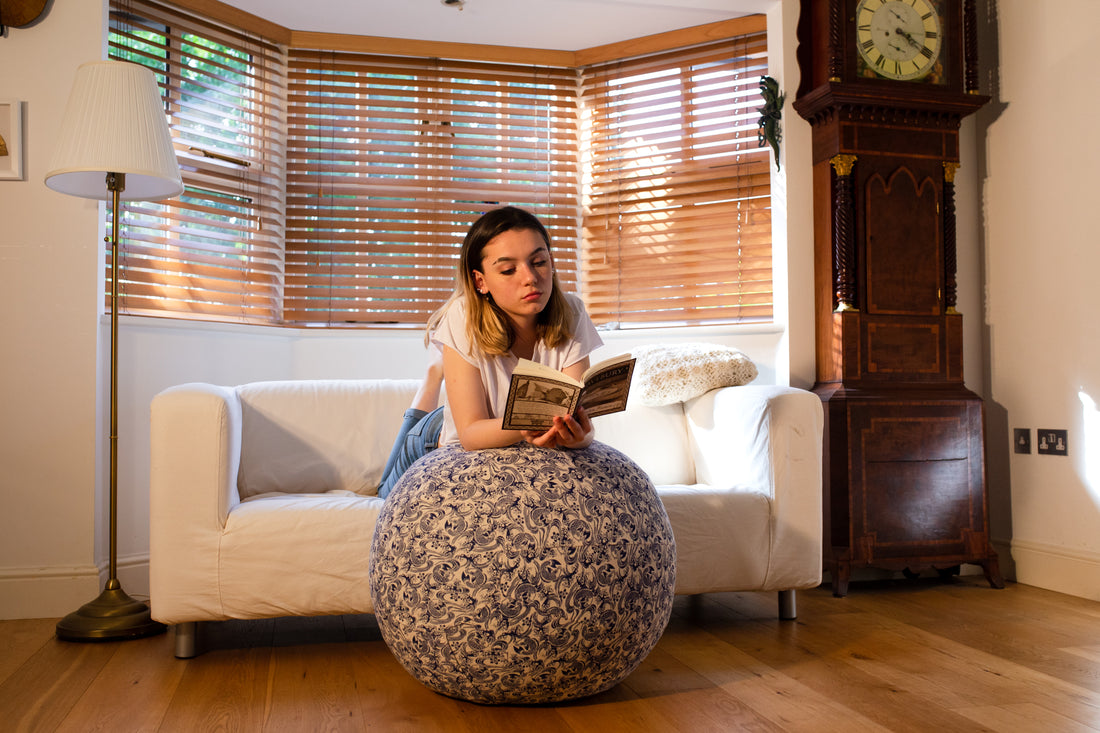
How to Make the Most of Distance Learning
Gina Hope LauricellaShare
For young students and adult professionals alike, it can be a challenge to adapt to working from home. This year, nearly 93% of households in the U.S. with school-age children are engaged in distance learning in at least some form. To help, we wanted to share some ways to make the most of this time and help students focus on both physical and mental health.
Creating A Positive Distance Learning Environment
Physical surroundings have been shown to affect students’ academic performance by up to 25%. We tend to associate home with rest and associate schools or offices with a productive state of mind, so it might be extra tough to concentrate without that distinction between spaces. Students of all ages can benefit from creating a space that allows for better focus and concentration while distance learning.
Establishing a calm, peaceful atmosphere that is conducive to learning can help make home feel a bit more like “school”. Try to create an area that’s dedicated to schoolwork by setting up a desk in your student’s bedroom or another place in the house that is usually quiet. This way, students can have a bit of separation between work time and relaxation time.
If siblings enjoy working together, it might be nice to set up a place where they can collaborate. Or if they prefer to work independently, you can try to find a space that each student can call their own.
Comfort is Key in Distance Learning
A workspace should be comfortable for the body as well as the mind. A comfy place to sit will be beneficial for your student’s posture and help them focus. Try to ensure that their workstation is ergonomic, whether it’s a seat at the dining room table or a chair at a desk.
The same posture rules of thumb for adults also apply for kids: Generally, screens should be at eye level and feet should touch the ground. Meanwhile, elbows, hips and knees should be bent at a 90-degree angle.
Breaks are Crucial...Trust Us

It’s important to remember that everyone needs to take breaks. Younger students especially might need to get up frequently. Allow them to get some energy out so that they don’t grow restless. At school, students might walk around during the between classes, so see if you can incorporate movement into your student’s schedule. These posture exercises are a great option!
There are also lots of fun ways to add physical activity into the school day, which will help students feel better both physically and mentally. For “gym class”, take a walk around the block, explore a nearby park or set up a game outside on the lawn. If your student has never tried yoga, it might be even a good time to start a new routine of daily practice on a yoga mat or yoga ball.
Distance Learning Ideas For Younger Students
Speaking of fun, distance learning allows for new opportunities to get creative, especially for younger or elementary students. They might require a bit more support from their families in order to complete their work and stay focused throughout the day, so having some ideas on hand that shake up their routine might be helpful.
Encourage your student to take advantage of this time by trying new things and exploring their creative side.
Pajama day every Friday? Why not! Or ditch the classic lunchbox meals and try cooking a new recipe together for lunch one day each week (green eggs and ham, anyone?). Is there an art project you’ve always wanted to work on?
Distance learning and more time at home allow more flexibility to break free of the “same-old” and explore new passions.
Distance Learning Ideas For Teenagers

For teenage or high school students, distance learning is an amazing opportunity to practice independence and self-structured work. Their schedules might be a bit more packed, but there are still ways to incorporate healthy practices into the day.
One element of distance learning that may be particularly hard for older students is socialization. It’s an important component of our mental health, but it can be difficult without regular school and activities. Finding ways to connect with friends, like studying together over Zoom or watching a movie synchronously with Netflix Party, can help students maintain a healthy social balance.
How to Use a Covered Yoga Ball to Spice Up Distance Learning for Any Age

Patience is a virtue. Unfortunately, it's a virtue that many of us don't develop until later in life (and one that many adults are still waiting on). For kids, it's easy to become impatient during the school day—especially when that school day is at home.
Give your kids the chance to bounce on a yoga ball while they watch educational videos, listen to instructional audio, or simply type away. It can be a fun way to fidget without losing focus—and it can even improve focus over the course of the day. Just be sure to cover your ball with a 100% woven cotton fabric ball cover so there's no sticking or slipping to the plastic.
Our ball covers range in size from 45–75 centimeters and are always made through the fair-trade process. And they're bounce-approved, so they won't take away from all that fun when learning from home.
Above All Else, Let's Take Care of Ourselves and Others
Life during this pandemic is an adjustment for people of all ages. Your student might be extra tired, stressed, or have a more difficult time working than usual. The best thing we can do is be patient, kind and supportive—so that we can all continue to learn, grow and stay healthy.
